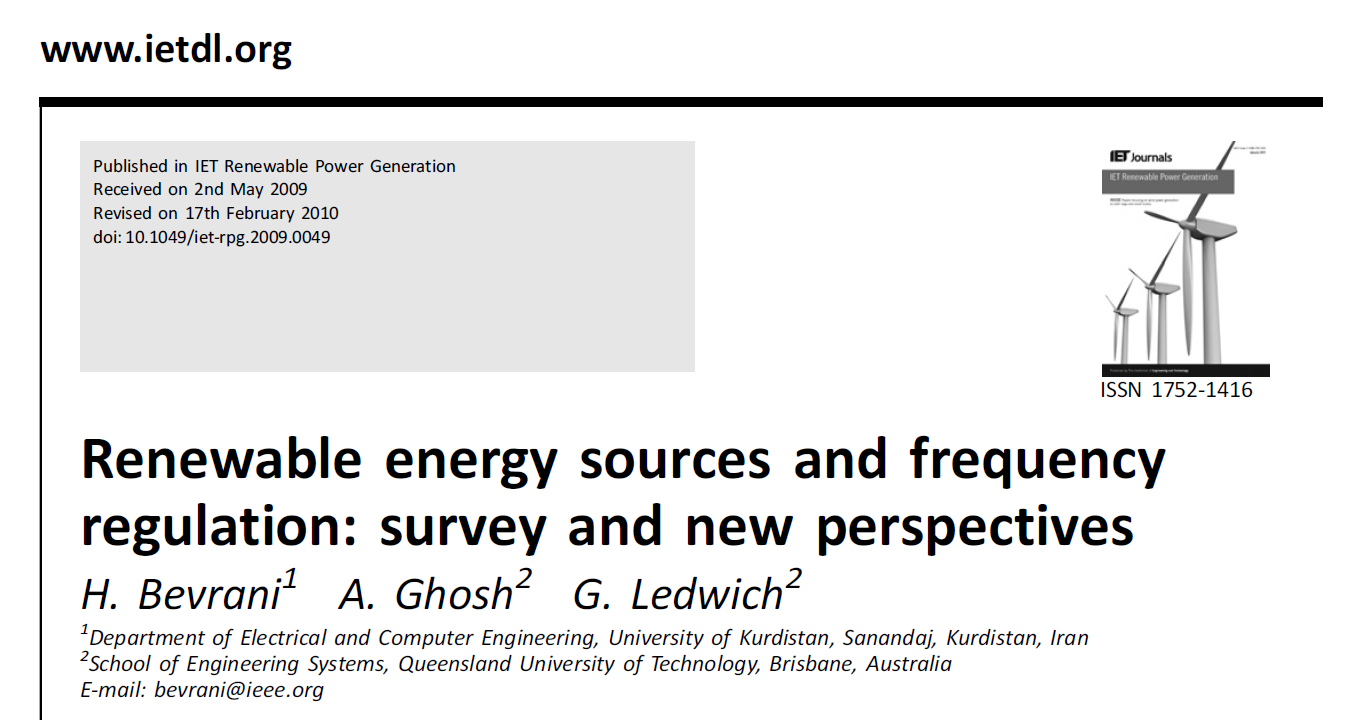
Introduction
The increasing need for electrical energy in the 21st century, as well as limited fossil fuel reserves and the increasing concerns with environmental issues for the reduction of carbon dioxide (CO2) and other greenhouse gasses, call for fast development in the area of renewable energy sources (RESs). Renewable energy is derived from natural sources such as the sun, wind, hydro power, biomass, geothermal, and oceans and fuel cells.
Limiting greenhouse gas emissions, avoidance of the construction of new transmission circuits and large generating units, diversification of energy sources to enhance energy security, quality and reliability, and support for competition policy are some important drivers in environmental, commercial and national/regulatory aspects behind the growth of RESs.
Recent studies have found that the renewable integration impacts are non-zero and become more significant at higher size of penetrations. Some studies represent a range of estimates based on different system characteristics, penetration levels and study methods. However, a common thread of all methods was the focus on RESs effects on the interconnected power system, rather than in an isolated one.
The RESs affect the dynamic behavior of the power system in a way that might be different from conventional generators. Conventional power plants mainly use synchronous generators that are able to continue operation during significant transient faults. If a large amount of wind generation is tripped because of a fault, the negative effect of that fault on power system control and operation, including frequency control issue, could be magnified. High renewable energy penetration in power systems may increase uncertainties during abnormal operation and introduces several technical implications and opens important questions, as to whether the traditional power system control approaches to operation in the new environment are still adequate.
Integration of RESs into power system grids have impacts on optimum power flow, power quality, voltage and frequency control, system economics and load dispatch. Regarding the nature of RESs power variation, the impact on the frequency regulation issue has attracted increasing research interest, during the last decade. Significant interconnection frequency deviations can cause under/over frequency relaying and disconnect some loads and generations. Under unfavorable conditions, this may result in a cascading failure and system collapse.
Present status and future prediction of RES worldwide: The power system architecture of the future incorporating RESs will look very different from what it is today. The RESs revolution has already commenced in many countries, as evidenced by the growth of RESs in response to the climate change challenge and the need to enhance fuel diversity. Renewable energy currently provides more than 14% of the world’s energy supply.
Currently, wind is the most widely utilized renewable energy technology in power systems, and its global production is predicted to grow to 300 GW in 2015. It has been predicted that wind power global penetration will reach 8% by 2020, about 400 GW installed worldwide. In terms of economic value, the global wind market in 2007 was worth about 25 billion EUR or 36 billion US$ in new generating equipment.
Europe: The European Union (EU) has set as a target 12% of electricity supplied by renewable generation by 2010. According to a recent directive of the European parliament, this is translated to an electricity production of 22.1% from RESs. It is predicted that 20% of the overall electricity consumption will be supplied from renewable sources by 2020.
Since 2000, the EU has installed 47 000 MW wind energy; 3100 MW hydro; and 1700 MW biomass power capacity during the 8-year period. According to the European Wind Energy Association, European wind power capacity is expected to be more than 180 GW in 2020.
United States: The US Department of Energy has announced a goal of obtaining 6% of US electricity only from wind by 2020; a goal that is consistent with the current growth rate of wind energy nationwide. Overall US wind power generating capacity grew by 45% in 2007, with total installed capacity now standing at 16.8 GW. It can be expected that the United States will overtake Germany as the leader in wind energy by the end of 2009.
Asia and pacific region: Numerous works on solar (PV) energy, batteries and energy capacitor units are being performed in Japan. The Japan has set an ambitious target of 4.5 GW of electricity to be generated by PV systems by the year 2010. The growing wind power market in Asian countries is also impressive. Japan installed 1538 MW of wind energy capacity at the end of 2007. China has added more than 5000 MW of wind energy capacity during 2007. Based on current growth rates, the Chinese Renewable Energy Industry. Association forecasts a capacity of around 50 000 MW by 2015. India also continues to see a steady growth and now has about 8 GW of wind power installations, up from just over 6.2 GW in 2006. In Korea, RES is gradually growing per year and the government plans to replace 5% of the conventional energy source by the year 2011.
After some slow years, the Pacific market gained new impetus in 2007, especially in New Zealand, where 151 MW were installed in 2007. In Australia, the newly elected Labour government has ratified the Kyoto Protocol and pledged to introduce a 20% target for renewable energy by 2020.
Middle East, North Africa and Latin America: Although Europe, North America, Asia and Pacific region continue having the largest additions to their RES capacity, the Middle East, North Africa and Latin America increased its wind power installations by about 50% at the end of 2007. New capacity was mostly added in Iran, Egypt, Morocco, Tunisia and Brazil.
